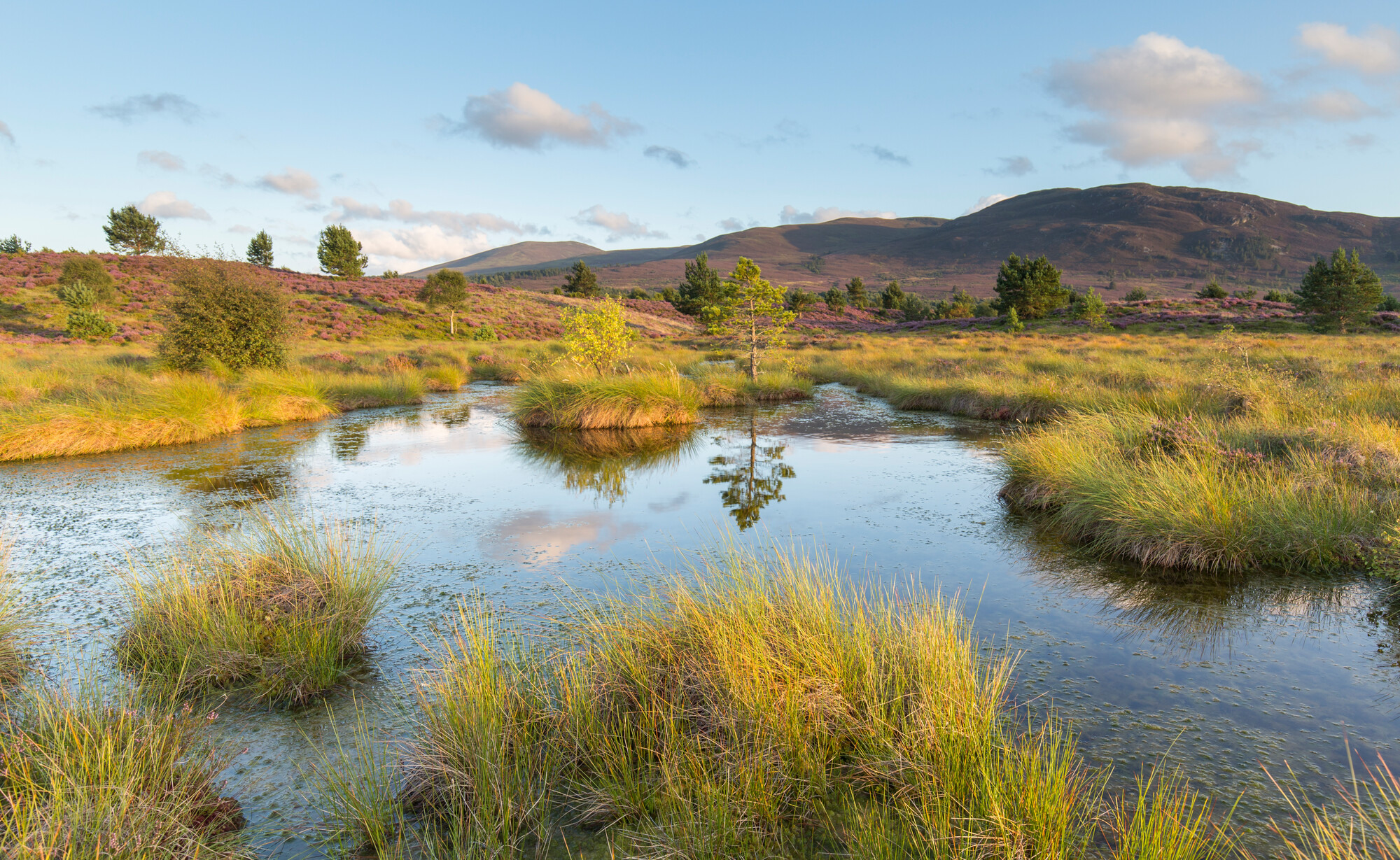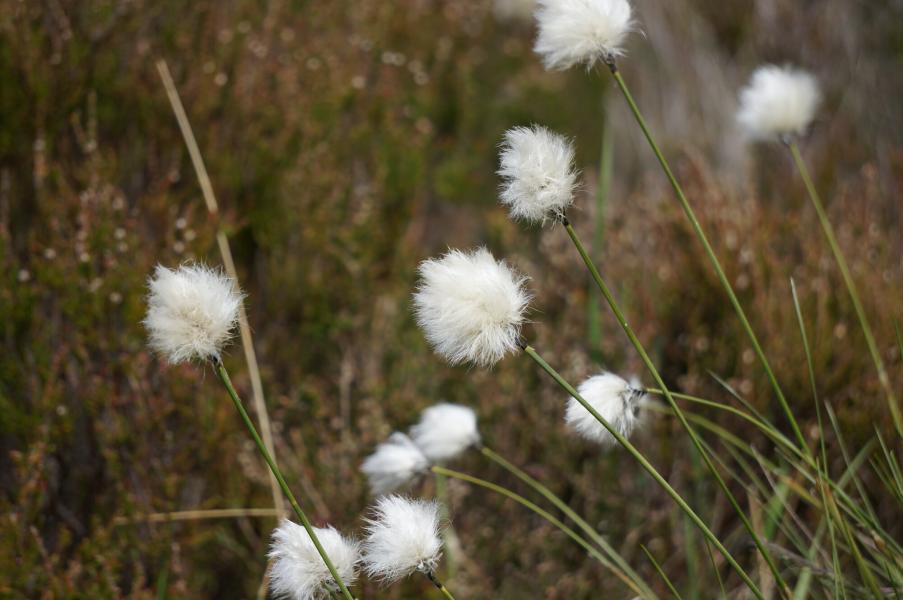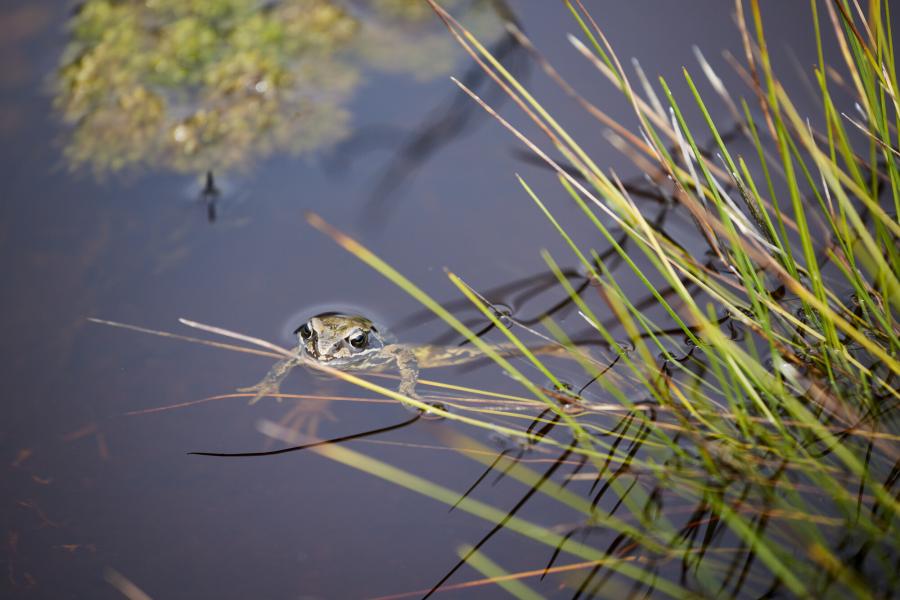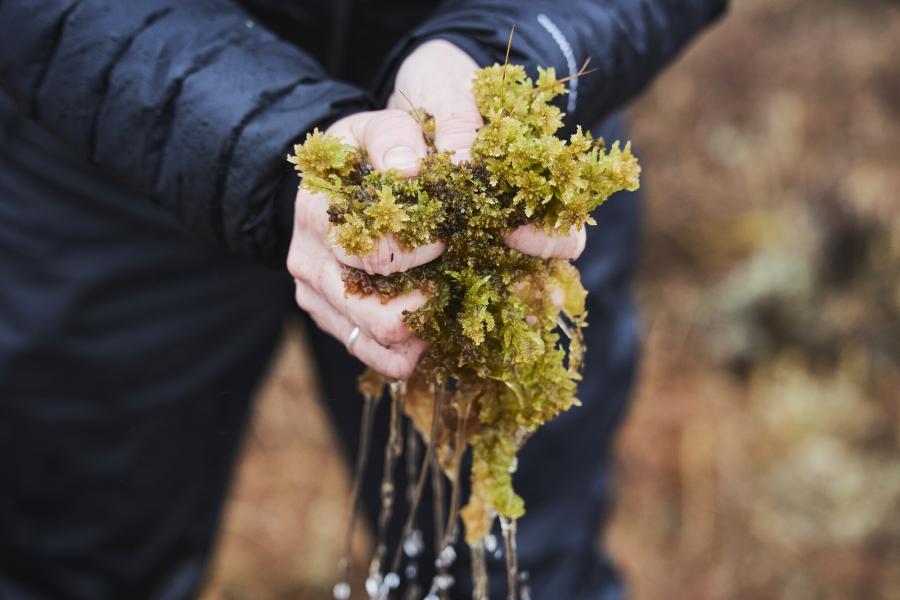Peatlands and moorlands

The heathlands and peatlands of the Cairngorms, often referred to together as moorland, represent a vast open landscape lying between the woodland edge and the mountain tops. In summer, purple heather blooms across the moors, an iconic and welcome sight that follows the colder months characterised by boggy browns and earthy greens.
At first glance moorlands may seem quite barren, with most vegetation growing no taller than knee height. Yet a closer look at these fascinating and internationally important bogs and heaths reveals an extraordinary variety of flora, fauna, and wildlife, from the smallest of insects to majestic birds of prey, all sustained by these important and complex habitats. These landscapes are texture galore, the rough heather, spikey juniper bushes, spongey moss and soft bog cotton all adapted to life exposed to the elements.
Heather moorland covers around 40% of the National Park. Below the wind-clipped ridges, much of this moorland is maintained by grazing red deer and hill sheep or actively managed by muirburn. This creates a mosaic of different aged vegetation, providing shelter and food for mountain hares and ground nesting birds such as the curlew, hen harrier and red grouse, as well as home to a multitude of smaller species including the blaeberry bumblebee, Scotch argus butterfly and the spectacular emperor moth.
It isn’t just wildlife that depends upon these landscapes though. Most of Scotland’s drinking water filters through peatlands before it reaches our taps, and they also have a role to play in reducing flood risks downstream in our towns and villages. Covering around 18% of the National Park and more than 20% of Scotland’s land mass, peatlands are as important as they are interesting.
Blanket bogs are found in the higher areas of the National Park, with peat forming in very wet conditions. Mosses like sphagnum moss are incredibly absorbent, so much so that they were used as wound dressings in the first world war. The waterlogged conditions mean that dead plant matter can only partly decompose. As a result, layer on layer of organic matter builds up over many years to form peat. In the National Park, most blanket bogs tend to be between 0.5m and 2m deep, however peatlands in lower lying areas can be more than 10m deep.
When in good health, peatlands remove CO₂ from the atmosphere – storing it as carbon in the peat. However when they are damaged they can become a net source of greenhouse gases and the additional benefits for people and wildlife can be lost.
Across the National Park more than 57,000 hectares of peatland has experienced some form of degradation, through historic draining, and in some cases overgrazing, trampling, or through fire. Once the surface vegetation, often called turf, is broken up, the underlying peat is exposed to the harsher weather of the Cairngorms, causing peat erosion. Significant restoration work is underway in the National Park, as part of our collective effort to respond to the changing climate.
Featured
Wildlife
The Cairngorms National Park is home to a quarter of the UK’s rare and endangered species. Its rich habitats are a haven for an array of wildlife, from iconic birds to elusive plants and flowers.
Wildfire management
As the climate changes, the risk of wildfires is ever more present in our daily lives and in a National Park, a wildfire has the potential to be devastating.
What we do
From pioneering conservation projects to community engagement and active travel, find out more about the range of work happening across the National Park.







